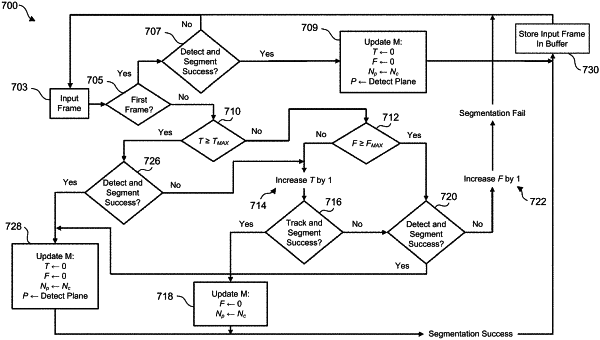| CPC G06T 17/205 (2013.01) [G06T 7/12 (2017.01); G06T 19/006 (2013.01); G06T 2210/56 (2013.01)] | 30 Claims |

|
1. A method of generating one or more three-dimensional models, the method comprising:
obtaining a first frame of an object in a scene, wherein a portion of the object is positioned on a plane in the first frame;
detecting the plane in the first frame;
segmenting, based on the detected plane, the object from the plane in the first frame;
generating a three-dimensional (3D) model of the object based on segmenting the object from the plane;
generating an initial mesh for a portion of the 3D model of the object corresponding to the portion of the object positioned on the plane;
determining a boundary set including edges of the initial mesh that belong to at least one triangle of the initial mesh;
generating, using the boundary set, a refined mesh for the portion of the 3D model;
obtaining a second frame of the object in the scene, wherein the portion of the object is positioned on the plane in the second frame; and
determining whether to generate a 3D model of the object for the second frame based on performing plane detection or object tracking on the second frame.
|